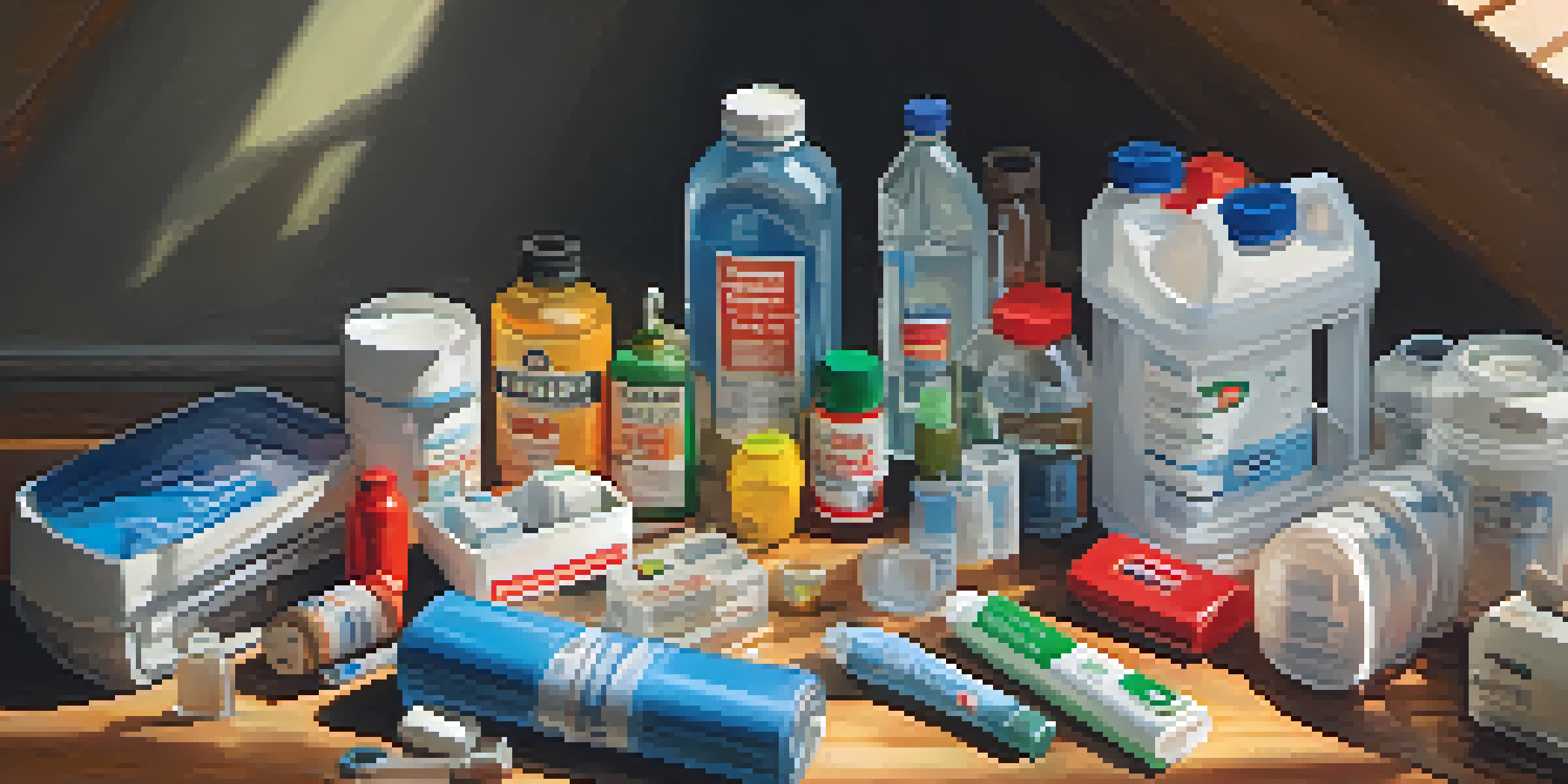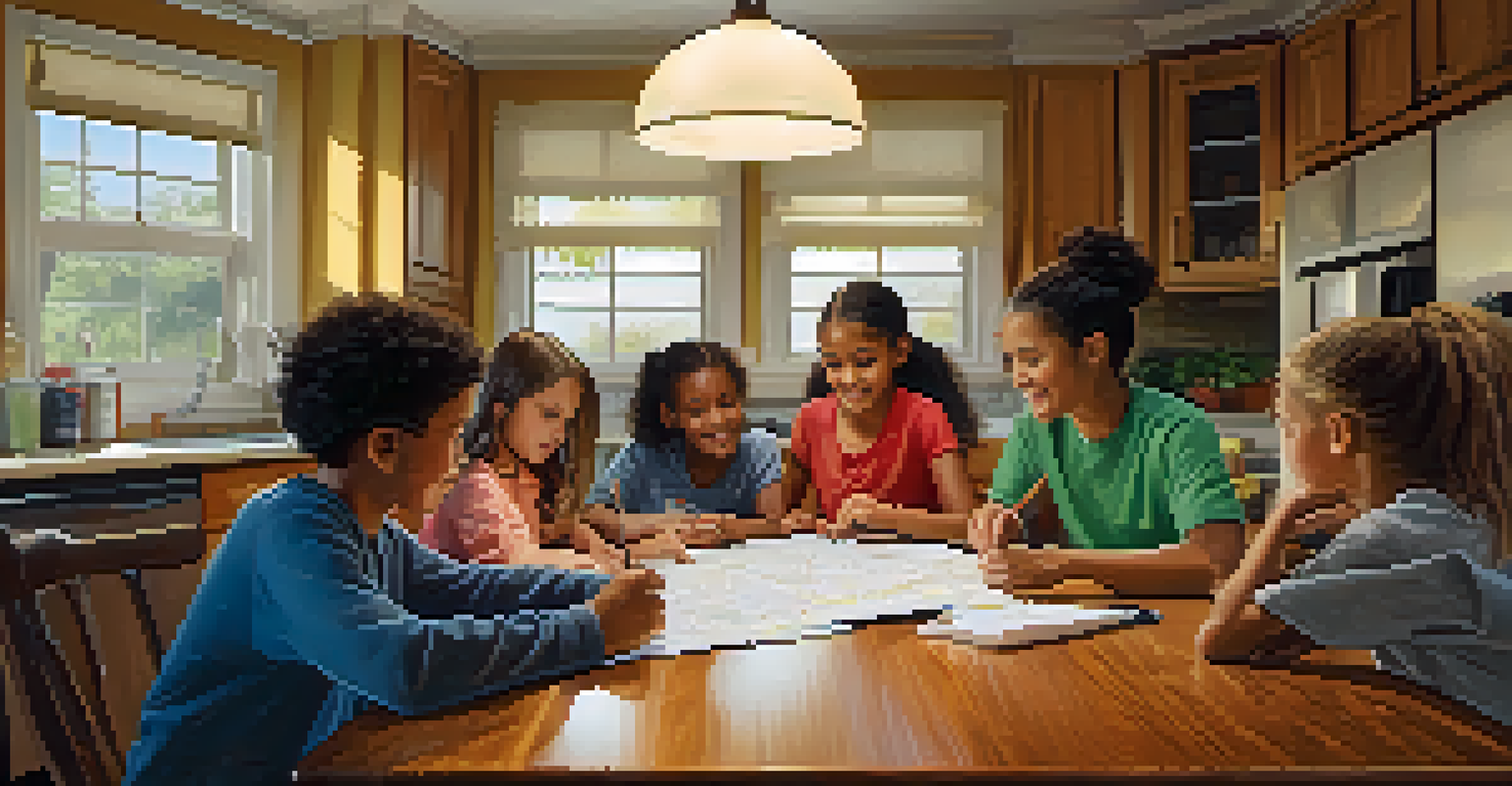How to Create a Personal Emergency Preparedness Plan

Understanding the Importance of Emergency Preparedness
Emergency preparedness is crucial for ensuring your safety and that of your loved ones. Life is unpredictable, and natural disasters, medical emergencies, or unexpected events can occur at any time. Having a plan in place helps you respond effectively and reduce panic during such situations.
By failing to prepare, you are preparing to fail.
Think of your emergency plan as a roadmap. Just as you would navigate through unfamiliar territory with a map, a plan guides you through crises, making sure you know what to do and where to go. It empowers you to take charge of the situation rather than being caught off guard.
Moreover, being prepared can save lives. Studies show that individuals with a well-structured plan are more likely to respond calmly and efficiently, mitigating the impact of emergencies. So, let’s dive into how you can create your own personal emergency preparedness plan.
Assessing Your Risks and Needs
Start by evaluating the specific risks you face in your area. This could range from natural disasters like hurricanes or earthquakes to human-made emergencies like chemical spills. Understanding these risks helps tailor your emergency plan to your unique situation.

Consider your personal needs and those of your family members. For instance, if you have young children, elderly parents, or pets, ensure your plan includes their requirements. This might mean preparing extra supplies or planning for additional care during an emergency.
Create Your Emergency Plan
Having a well-structured emergency plan empowers you to respond effectively and calmly during crises.
By assessing risks and needs, you create a strong foundation for your plan. It’s like building a house: the sturdier the foundation, the more resilient the structure. This initial step is vital for ensuring your preparedness is comprehensive and effective.
Creating an Emergency Contact List
An emergency contact list is a key component of your preparedness plan. It should include family members, friends, and local emergency services. This ensures that you can reach out for help or let loved ones know you're safe during a crisis.
It’s not the will to win that matters—everyone has that. It’s the will to prepare to win that matters.
Consider using multiple methods to store this list. Keep a physical copy in your emergency kit and also save it digitally on your phone. This way, you have access to it whether you’re at home or on the go, making it easier to stay connected.
Don’t forget to include important medical contacts, such as your doctor or pharmacy. Having this information readily available can be a lifesaver in emergencies, allowing for quick access to necessary medical care or medications.
Developing a Communication Plan
In times of crisis, communication can make all the difference. Develop a communication plan that outlines how your family members will stay in touch. Decide on a central point of contact, especially if you’re separated during an emergency.
Designate a meeting place where everyone can gather if it’s safe to do so. This can help prevent confusion and ensure that everyone knows where to go. Whether it’s a neighbor’s house or a local park, having a predetermined location can save valuable time.
Assess Risks and Personal Needs
Understanding the specific risks in your area and tailoring your plan to your family’s needs creates a solid foundation for preparedness.
Also, make sure to include alternative communication methods. For instance, texts often go through when phone calls can’t. Having a backup plan like this can help ensure your family stays connected, no matter the situation.
Preparing an Emergency Supply Kit
An emergency supply kit is your lifeline during a crisis. Start by gathering essential items such as water, non-perishable food, flashlights, batteries, and first aid supplies. Aim for at least a three-day supply to ensure you’re covered in case help is delayed.
Don’t forget personal items like medications, important documents, and cash. In emergencies, access to your prescriptions and identification can be critical. Storing these items in a waterproof container can also protect them from damage.
Regularly check and update your kit to ensure everything is in working order. Just like checking the oil in your car, maintaining your emergency kit is essential for it to function effectively when you need it most.
Planning for Evacuation and Shelter
Sometimes, staying put isn’t the safest option. It’s essential to have an evacuation plan in place, which includes knowing multiple routes out of your area. Familiarize yourself with local shelters and their locations, as they can provide refuge during disasters.
Consider transportation options too. If you have a vehicle, keep it maintained and fueled up. If you rely on public transportation, know the schedules and routes, especially during emergencies when they might change.
Stay Informed and Educated
Continuously educating yourself about potential risks and emergency response practices enhances your overall readiness and peace of mind.
Lastly, discuss your plan with family members to ensure everyone knows what to do. Just like practicing fire drills at school, rehearsing your evacuation plan increases the chances that everyone will respond correctly in a real emergency.
Revisiting and Updating Your Plan Regularly
An emergency preparedness plan isn’t a one-time task—it's an ongoing process. Schedule regular check-ins, perhaps every six months, to review and update your plan. Changes in your family dynamics, jobs, or local risks can necessitate adjustments.
Involve your family in the process. Discuss what worked well and what didn’t during past emergencies, and make improvements accordingly. This collaborative approach not only strengthens the plan but also fosters a sense of teamwork and preparedness.

Moreover, keeping your plan fresh in everyone’s mind ensures that when an emergency does arise, everyone knows their role. It’s the difference between a well-rehearsed play and a last-minute scramble—practice makes perfect!
Staying Informed and Educated
Education is a powerful tool in emergency preparedness. Stay informed about potential risks in your area and the best practices for responding to them. This knowledge equips you to make informed decisions during a crisis.
Consider taking first-aid and CPR courses. Not only do these skills enhance your readiness, but they can also empower you to help others in need. It’s like learning to swim—having these skills can be lifesaving, both for yourself and for those around you.
Lastly, stay connected with local emergency services for updates and resources. Many communities offer newsletters or alerts about emergencies, so sign up to receive this information. By staying informed, you enhance your overall preparedness and peace of mind.